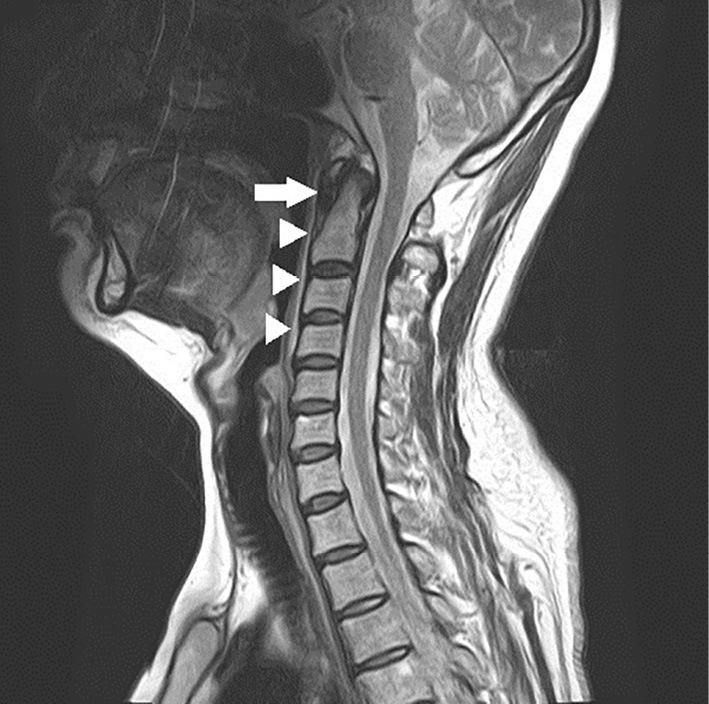A 74-year-old woman was admitted to our hospital due to a high fever, severe neck pain, and odynophagia for several days. A blood test showed a high white blood cell count and high C-reactive protein levels. Enhanced magnetic resonance image (MRI) showed low-signal calcification on T2-weighted imaging in the retropharyngeal space at the C1-C2 level (Picture 1, arrow) with slight prevertebral edema, indicating inflammation of the longus colli muscles (Picture 1, arrow heads). Computed tomography (CT) was subsequently performed, and calcification of the longus colli tendons was confirmed (Picture 2, arrow). Based on these findings, she was diagnosed with acute prevertebral calcific tendinitis (APCT). All of her symptoms gradually improved with the administration of non-steroidal anti-inflammatory medication and local rest using a neck collar. APCT is a rare disease accompanied by severe neck pain and a fever (1,2). It is important for physicians to be aware of its MRI and CT findings to avoid performing any unnecessary medical and surgical intervention.
Picture 1.

Picture 2.

The authors state that they have no Conflict of Interest (COI).
References
- 1.Levy Z, Carroll J, Farley H. Benign nuchal rigidity: the emergency department evaluation of acute prevertebral calcific tendonitis. West J Emerg Med 13: 113-116, 2011. [DOI] [PMC free article] [PubMed] [Google Scholar]
- 2.Wakabayashi Y, Hori Y, Kondoh Y, et al. . Acute calcific prevertebral tendonitis mimicking tension-type headache. Neurol Med Chir 9: 631-633, 2012. [DOI] [PubMed] [Google Scholar]


